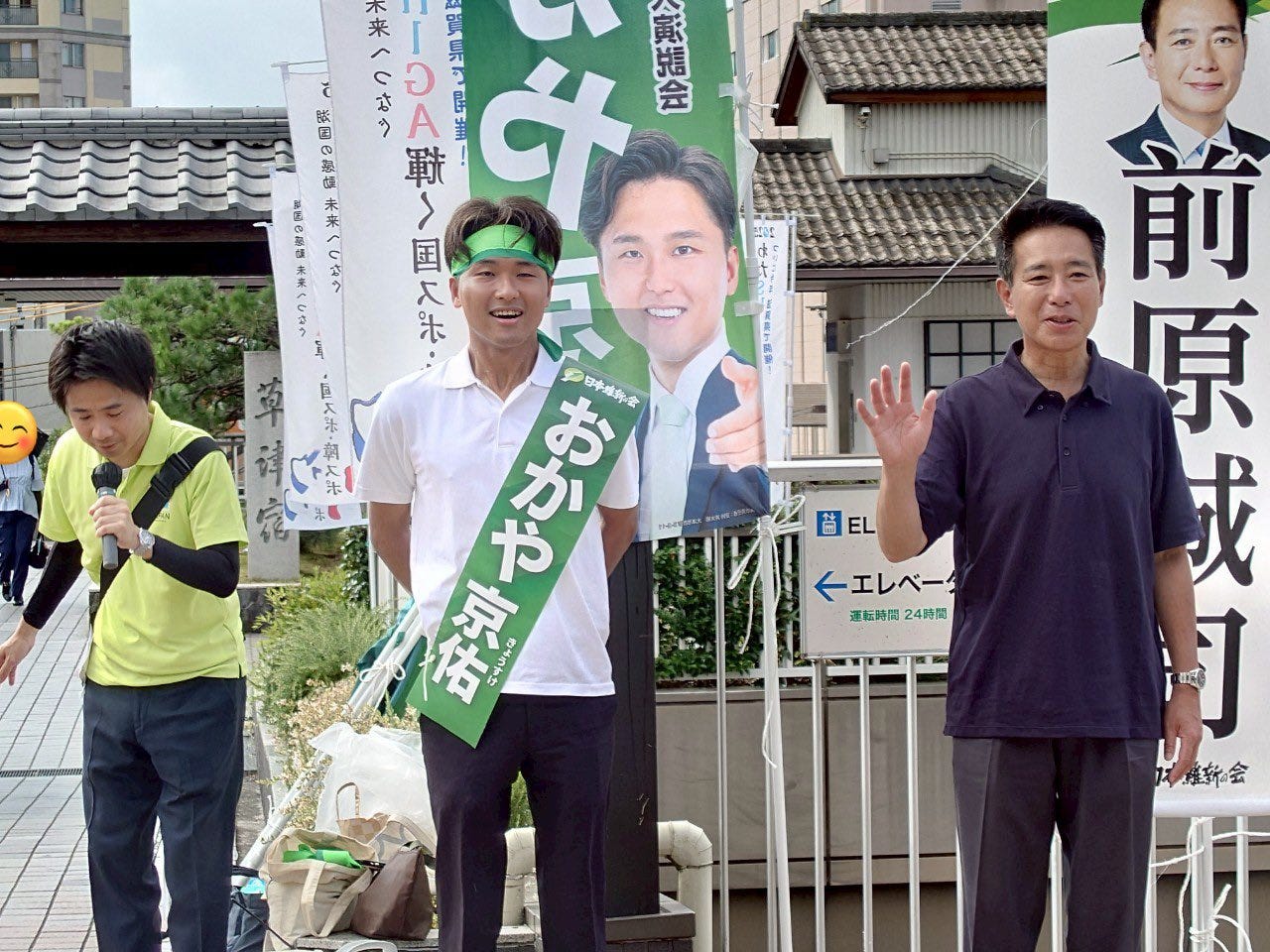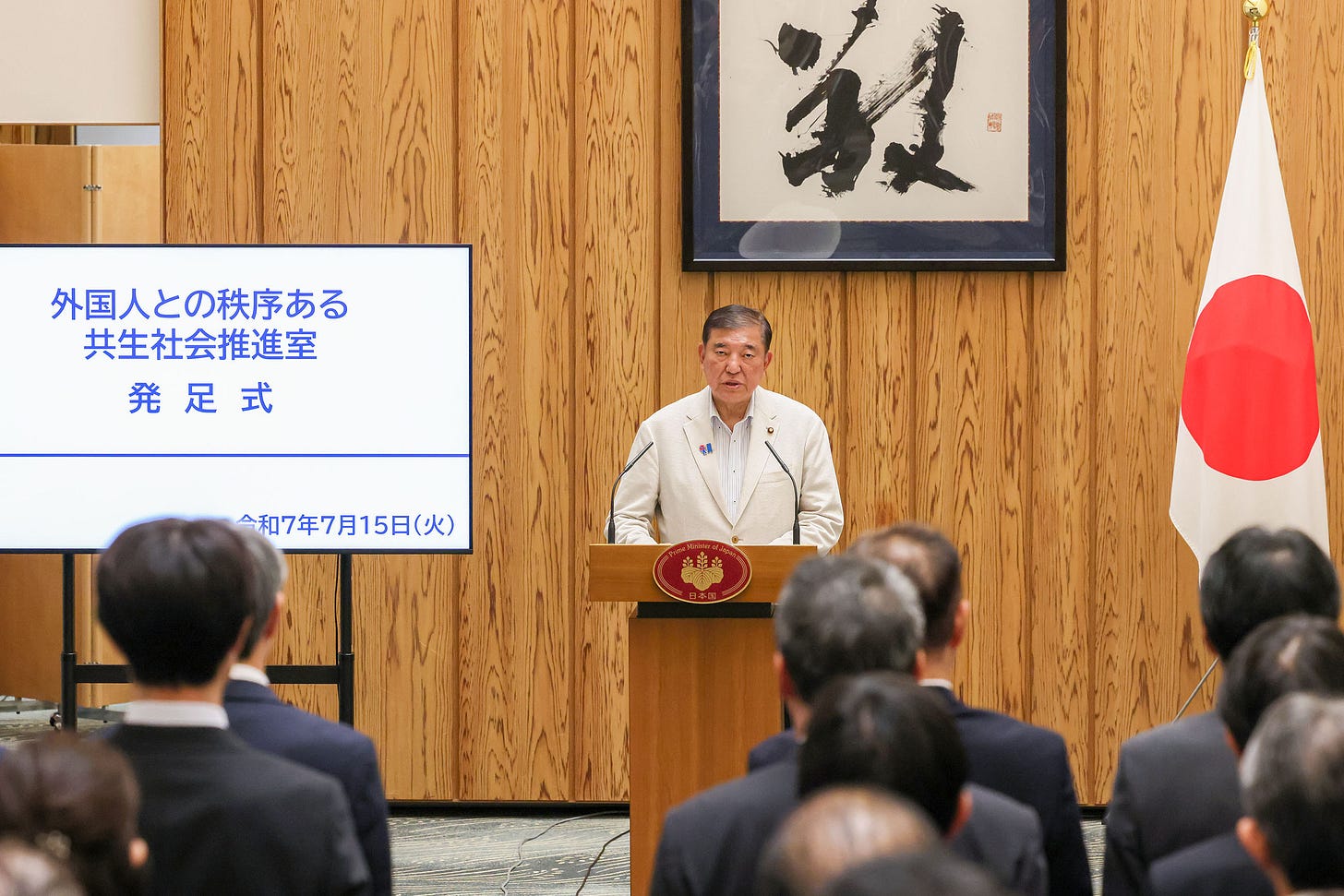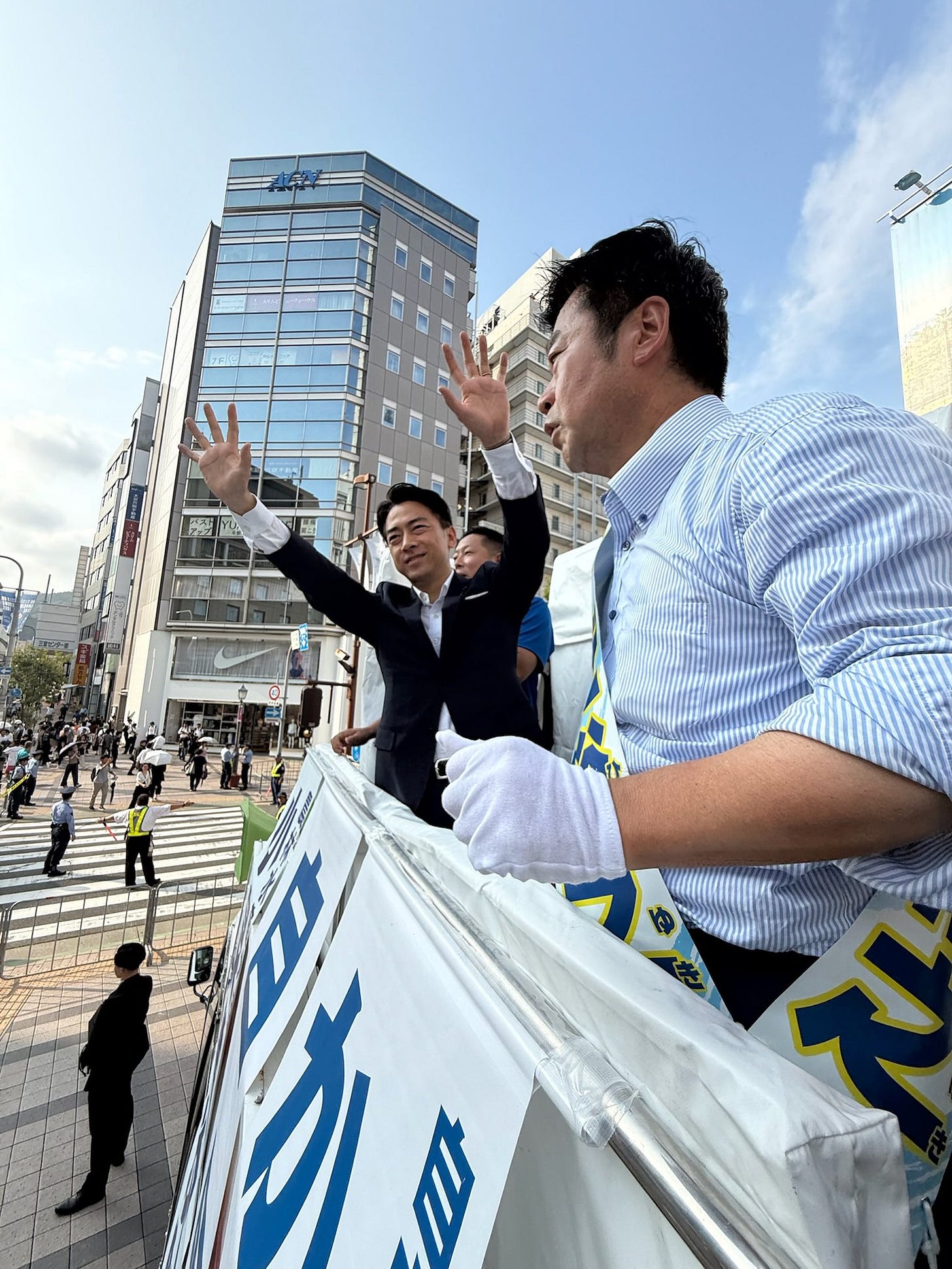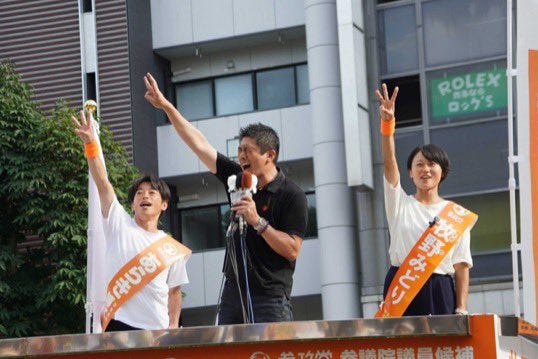The foreign interference election? | Today in the Upper House Campaign
As more polls show Sanseitō surging, the party draws more critical attention - including accusations of foreign interference on its behalf
In light of some extraordinary developments in the upper house campaign, today’s edition will be available to all subscribers.
A pdf of my viewer’s guide to the upper house elections — available to paid subscribers here — can be purchased here.
If you are looking for timely, forward-looking analysis of the stories in Japans’s politics and policymaking that move markets, I have launched a new service through my business, Japan Foresight LLC. For more information about Japan Foresight’s services or for information on how to sign up for a trial or schedule a briefing, please visit our website or reach out to me.
I joined the 14 July edition of Bloomberg’s “The Asia Trade” to discuss the upper house elections and Japan’s trade talks with the US.
I also spoke to NPR’s Anthony Kuhn about the role US-Japan trade talks have played in the upper house campaign, available here.
The campaign trail
On Tuesday, 15 July, Prime Minister Ishiba Shigeru was in Kagawa, Ehime, and Okayama, and then went to Osaka and Toyama on Wednesday. Among other Liberal Democratic Party politicians, Koizumi Shinjirō was in Yamanashi and Chiba on Tuesday before heading to Kansai on Wednesday, stopping in Kyoto, Hyogo, and Okayama. Kobayashi Takayuki was in Osaka and Oita on Tuesday and Koichi and Ehime Wednesday.
Komeitō leader’s Saitō Tetsuo’s activities were not shared.
Constitutional Democratic Party (CDP) leader Noda Yoshihiko campaigned in Niigata on Tuesday, where the CDP is working to defend a seat. On Wednesday, he campaigned in Tokyo, where the party has fielded two candidates, and in Ibaraki. Secretary-general Ogawa Junya was in Aichi and Gifu on Tuesday and Tokushima and Kyoto on Wednesday.
Tamaki Yūichirō, Democratic Party for the People (DPFP) leader, was in Tokyo and Kanagawa on Tuesday and Saitama, Tokyo, and his home prefecture of Kagawa on Wednesday.

Ishin no Kai co-leader Yoshimura Hirofumi was in Hyogo on Tuesday and part of the day Wednesday before going to Tokyo, while his partner Maehara Seiji campaigned in Shiga on Tuesday and Kyoto on Wednesday.
Sanseitō’s Kamiya Sōhei visited Shimane and Tottori on Tuesday and Nagano, Toyama, Ishikawa, and Fukui on Wednesday.
JCP leader Tamura Tomoko was in Hyogo on Tuesday and Hokkaido on Wednesday.
Opinion polls
In its latest pre-election poll, Kyodo found that it is doubtful that the ruling coalition will be able to retain its majority in the upper house. As in other polls, Kyodo found that the LDP could struggle to exceed 12 seats in proportional representation (PR) voting; expects that Komeitō will be unable to defend its 14 seats; and anticipates that both the DPFP and Sanseitō could win more than 10 seats each, with the latter picking up seats in multi-member districts.
The Nikkei Shimbun similarly found that the outlook for the ruling coalition has worsened since the start of the campaign. The newspaper expects the ruling coalition to lose a significant number of seats, though it says that 20 of the 32 single-member constituencies are toss-ups. Like Kyodo, it anticipates that both the DPFP and Sanseitō could each win more than 10 seats. Nikkei suggests that Sanseitō candidates could win at least four multi-member constituencies, including a first-place finish for Saya in Tokyo, bumping off candidates from established parties. Meanwhile, its prediction for PR seats suggests that newer parties could gain at the expense of all older parties, the CDP included.
The Yomiuri Shimbun’s updated poll is considerably more negative than Nikkei’s, suggesting that the best-case scenario for the ruling coalition is 52 seats while the worst is 31 seats. The LDP, Yomiuri reports, could be at risk of winning fewer seats than the 36 it won in 1989, its worst performance in an upper house election to date. Like the other polls, both the DPFP and Sanseitō are projected to make significant gains.
Campaign notes
More scrutiny for Sanseitō



As Sanseitō has climbed in the polls, the party is facing increasing amounts of scrutiny for its words and deeds; indeed, the party has likely been subjected to more scrutiny in the past three weeks than it has in the past three years.

Most notably, the party is under fire after Saya, its candidate in the Tokyo multi-member constituency, was interviewed on Sputnik, the Russian state-owned news agency. Kamiya said that a party staffer had been fired for authorizing the interview without securing approval from higher-ups. Against this backdrop, both Ishiba government officials and LDP lawmakers have warned that foreign powers are intervening in Japan’s democracy, using social media to stoke social divisions. Deputy Chief Cabinet Secretary Aoki Kazuhiko said Wednesday that Japan had become a target of foreign influence operations. Digital Minister Taira Masaaki said Tuesday that the effects of social media use on social divisions could be seen but added that reports of foreign intervention needed to be verified. A government source told Yomiuri that private-sector analyses point to activity by foreign bots on social media. Meanwhile, Koizumi Shinjirō, stumping in Yamanashi Tuesday, said that Japan’s elections are “no longer an exception” to efforts by foreign powers to use social media to destabilize democracies.1 There is little reason to doubt the possibility of foreign interference, which have heretofore been relatively immune due to the limited role played by social media, though as Koizumi’s remarks suggest, the LDP will likely make full use of the suspicions in the final days of the campaign to highlight the risks Japan faces in a dangerous world and warn what could happen if the ruling coalition fails. In the meantime, Kamiya denied that his party had received support from Russia and hit back at his rivals, suggesting that allegations directed at his party “bordered on obstructing elections.”
Meanwhile, some of Sanseitō claims about the conduct of Japan’s foreign population – which have been widely shared on social media – have also been challenged. The Nikkei Shimbun looked at claims about criminal activity by foreigners and found that although Japan’s foreign population is now significantly larger, there were significantly fewer criminal cases (15,541) in 2023 than in 2005, when they peaked at more than 40,000. The paper found no increase in illegal migrants over the past fifteen years; found that the actual percentage of foreign households receiving public assistance was 2.9%, not more than one third as has been claimed; and noted that the total annual amount of unpaid national health insurance premiums – including Japanese and foreign nationals – is JPY 145.7bn, significantly less than the JPY 400bn that has been supposedly left unpaid by foreigners. The Ministry of Health, Labor, and Welfare has for its part also worked to counter misleading claims circulated on social media. The media has also looked at some of the party’s more extreme policy positions, including its draft constitution, which Mainichi notes, omits many of the individual rights guaranteed in the postwar constitution and also includes language redolent of the prewar era in sections on the imperial household and education.
Finally, the party is facing pushback for its representatives’ conduct on the campaign trail. Kanagawa JCP filed a criminal complaint against Sanseitō candidate Hajikano Hiroki for a reply on social media to a former JCP officeholder about how Communists had brutally murdered his colleagues – Hajikano is a former police officer – and that he cannot shake his fear of Communists. The criminal complaint comes after the party demanded an apology and retraction. At the same time, Miyagi prefectural government is demanding an apology and retraction from Kamiya after he falsely stated in a stump speech that the prefecture had sold its water and sewer services to “foreign capital”; the prefecture had contracted out its operations but retained ownership.
All told, this is likely only the beginning of a broader political and social reaction to the party’s growing presence.
Ishiba’s fate
LDP upper house member Aoyama Shigeharu, a conservative opponent of the prime minister’s and head of the Osaka LDP, deliberately snubbed Ishiba when he campaigned in Osaka on Wednesday, saying that he did not want the prime minister to campaign in the prefecture. Aoyama also told an audience of LDP upper house candidates on Monday that he expects that the party will win fewer than 40 seats in the upper house elections and that every time the prime minister and his cabinet ministers campaign,2 the party loses votes.
While Aoyama has been an exceptionally vocal critic of the prime minister, suggesting that this griping can be discounted, it may be a more strident version of what other LDP lawmakers are saying in private as speculation grows about what Ishiba will do if the ruling coalition falls short of a majority on Sunday. There is a genuine debate about what Ishiba should do if Japan enters a truly unprecedented situation with the government in control of neither house of the Diet, with some in the LDP and government arguing that Japan cannot afford to change leaders in the midst of ongoing trade negotiations with the United States. They are also arguing that if Ishiba were to quit, it would give opposition parties an opportunity to forge an alternate coalition that would elect their choice as prime minister instead of Ishiba’s successor, expelling the ruling coalition from power. However, given the party’s record in elections under his leadership, Ishiba will face extraordinary pressure to quit and could even face a party rebellion if a third of the party’s lawmakers move to convene a plenary meeting of all LDP lawmakers from both houses.
The T-word
As the outlook for the ruling coalition has worsened, Japanese government bond yields have climbed, with ten-year yields reaching 1.595% on Tuesday, the highest they have been since 2008. The result is that the Japanese media has referred to the possibility of a post-election “Truss shock,” suggesting the possibility of sharp declines in stock prices, the value of the yen, and bond prices of the post-election government pivots from Ishiba’s emphasis on fiscal consolidation to fiscal stimulus, as proposed by the LDP right and the more conservative opposition parties who could be part of an expanded coalition government. (Bloomberg referenced Truss too.) If Ishiba quits, the LDP opts for a more right-wing successor (e.g. Takaichi Sanae), and the coalition expands to include the DPFP or Ishin no Kai, the government would likely shift to fiscal expansion – and perhaps also clash with the Bank of Japan on monetary policy – though as this sequence of events suggests, there are several events that would have to occur for this pivot to become a reality, and even if the LDP were to turn to a fiscal dove like Takaichi to lead it, her victory could entail some compromises that avoid more open-ended fiscal outlays.
Other links

Prime Minister Ishiba inaugurated an office in the cabinet secretariat on Tuesday for promoting peaceful co-existence with Japan’s foreign population.
The same day, Komeitō leader Saitō Tetsuo called for rejecting the “politics of division” and building an inclusive society.
A look at Ishin no Kai’s efforts to defend its two seats in Osaka’s multi-member district from Sanseitō.
LDP Secretary-General Moriyama Hiroshi criticized former LDP member Sekō Hiroshige for his lack of fidelity to his former colleagues as a Sekō-backed independent is battling with the LDP’s Nikai Nobuyasu, son of former LDP Secretary-General Nikai Toshihiro.
The similarities between CDP leader Noda Yoshihiko’s focus on agricultural reform in his campaigning in single-member constituencies and Ozawa Ichirō in 2007.
An analysis of politics posts on X found that the most commonly used phrases are “tax cut” and “consumption tax,” though references to “Japanese” and “foreigner” are rising.
Early voting is on pace to greatly surpass the 2022 upper house elections. As of 13 July, 9.885 million people had voted, 9% of the electorate and a 27% increase from 2022.
To be clear, the government has not revealed more information about the alleged influence operations. It does not take a great deal of cynicism to wonder whether the LDP is using the media appearance on Sputnik News to scare voters
I wonder who he has in mind.







